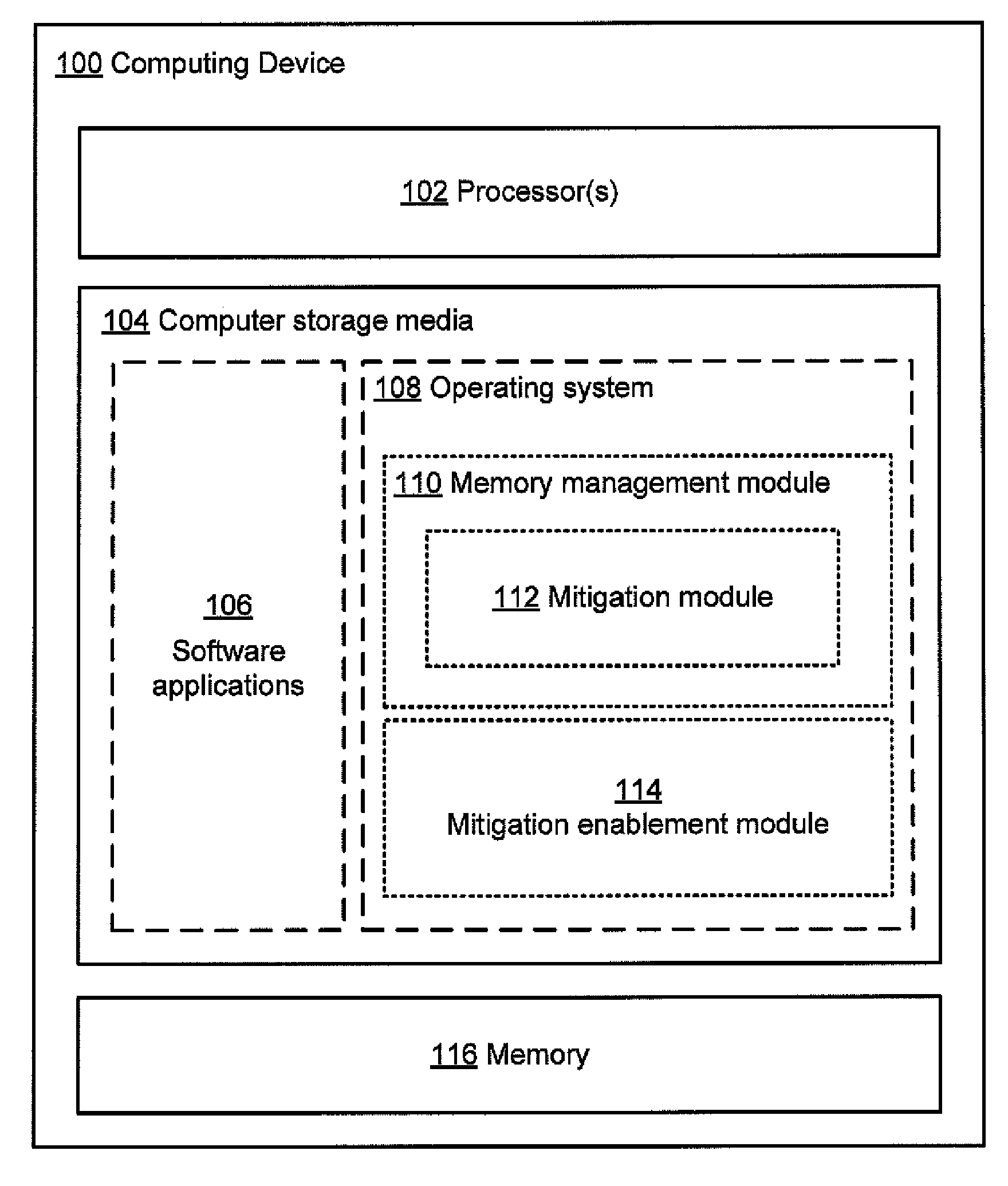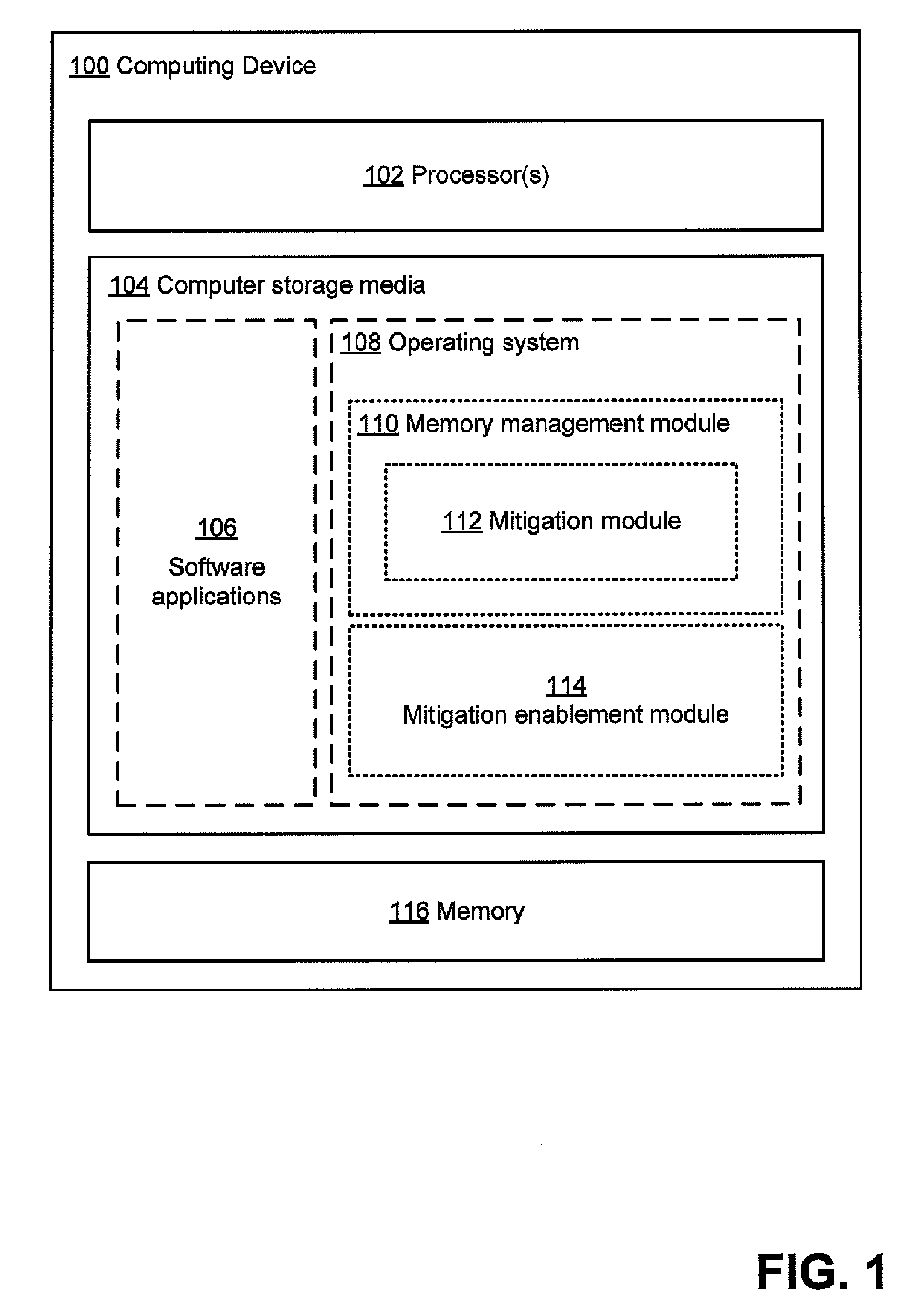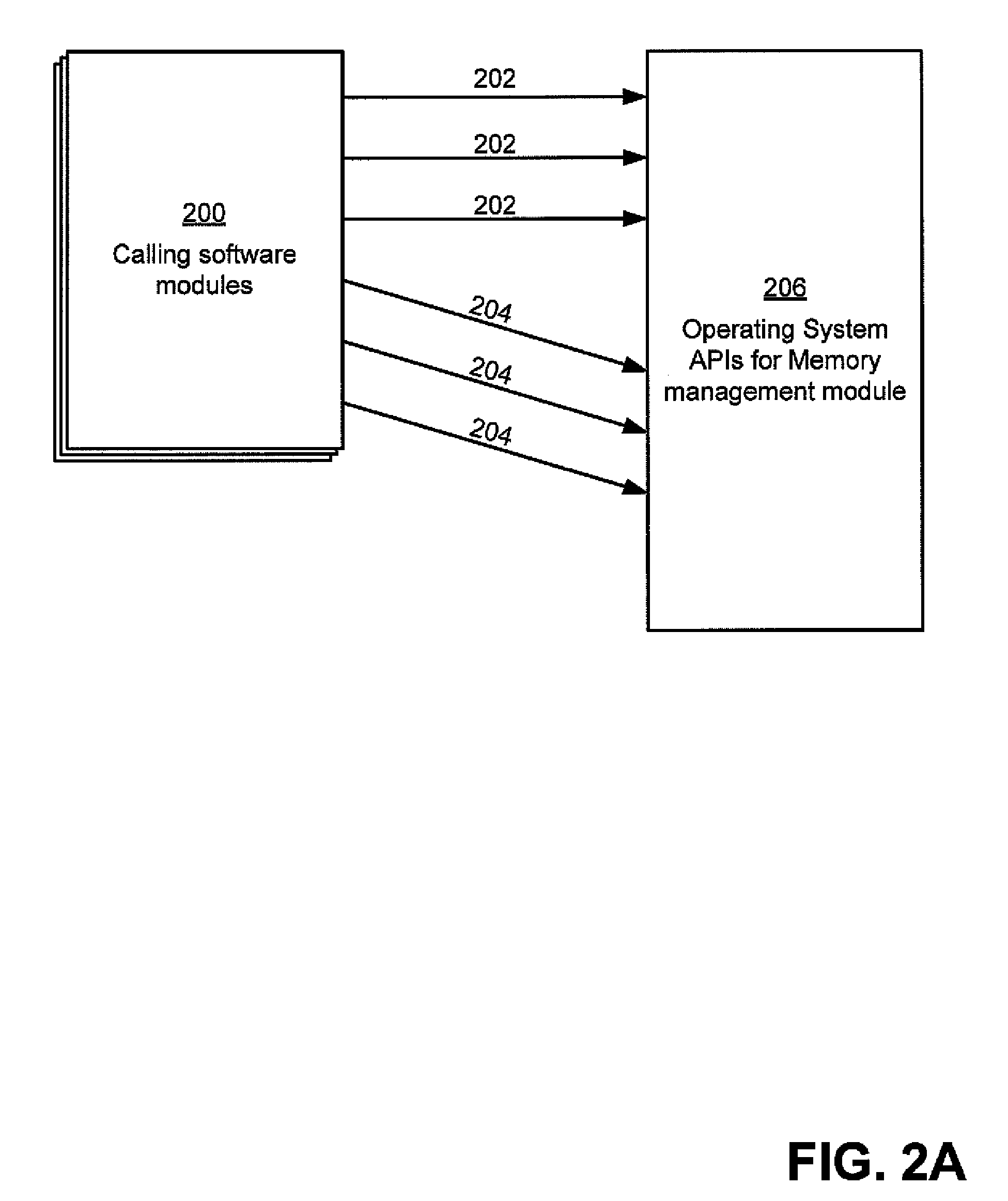[0008]Applicants have recognized and appreciated that applications may operate more reliable, and a user experience improved, by using
memory management to compensate for
programming bugs in the software applications that cause memory errors. Applicants have recognized that many memory errors may be caused by inconsistencies in memory operations performed by the applications, and that the effects of these
programming bugs may be mitigated by anticipating these inconsistencies and performing memory management in a way to correct for them. For example, by allocating more resources (such as memory and / or time) to an application than the application requests, a memory management module may compensate for a bug in the application that causes the application to access more memory than it requested or using memory after it signals it is done with the memory. Further, in some instances, a memory management module may mitigate errors by not executing memory operations requested by applications, for example, if it is detected that input information for the operations is incorrect.
[0009]Many different types of errors may be mitigated with different types of mitigation actions, examples of which are discussed in greater detail below. Applicants have appreciated, however, that mitigations such as these may have a significant
impact on the efficiency of the computing devices and may impact performance of applications executing on those devices. Evaluating and manipulating a
memory operation each time one is requested may add time to the completion of a request, and allocating more memory than requested uses more memory and thus may reduce resources available to the
system. Applicants have appreciated the desirability of a memory management module having mitigations which is able to be selectively enabled per application.
[0010]In accordance with the principles described herein, a memory management module may be implemented that has different
modes of operation for each of one or more
software modules issuing to the memory management module requests for performance of memory operations. In one mode of operation, one or more mitigation actions may be performed by the memory management module in addition to or instead of the memory operation requested by the calling software module, such that the memory operations are performed in accordance with the mitigation actions. These mitigation actions may serve to reduce a likelihood of a memory error affecting the calling software module. In another mode of operation, the memory management module performs memory operations as requested, without performing mitigation actions. A memory management module may maintain a
record in a
data store associated with the memory management module, the
record having at least one entry for each calling software module indicating the mode in which the memory management module should operate for the calling software module.
[0011]Applicants have appreciated, however, that mitigations such as these may have a significant impact on the efficiency of the computing devices and applications on which they are implemented. Evaluating and manipulating a memory operation each time one is requested may add time to the completion of a request, and allocating more memory than requested uses more memory and thus may reduce resources available to the system. Applicants have appreciated, therefore, that the desirability of a memory management module having mitigations which is able to be selectively enabled per software module.
[0012]In accordance with the principles described herein, a memory management module may be implemented that acts in one of two
modes of operation for each of one or more
software modules issuing requests for performance of memory operations to the memory management module. In one mode of operation, one or more mitigation actions may be performed by the memory management module in addition to or instead of the memory operation requested by the calling software module, such that the memory operations are performed in accordance with the mitigation actions. These mitigation actions may serve to reduce a likelihood of a memory error affecting the calling software module. In the other mode of operation, the memory management module performs memory operations as requested, without performing mitigation actions. Once the mitigation actions are enabled for a software module, the mitigation actions may then be monitored to determine whether they are successful at reducing a number of memory errors negatively affecting the software module. Monitoring may be done in any suitable manner, such as by monitoring over time and over a plurality of instances of an application to collect statistics on whether the mitigation actions are effective. Any suitable statistics may be collected, including statistics on a number and / or frequency of errors and of detected successes of mitigations actions. These statistics may take any suitable forn, including as a
ticket value that is incremented in the case mitigation actions are successful in one instance and decremented when mitigation actions are not successful in another instance. If the monitoring indicates that mitigation actions are successful at reducing a number of memory errors negatively affecting the software module, the mitigation actions may be applied to future memory operations requested by the software module. If not, then the memory management module may refrain from applying the mitigation actions to future memory operations requested by the software module. A memory management module may maintain a
record in a
data store associated with the memory management module, the record having at least one entry for each calling software module indicating the mode in which the memory management module should operate for the calling software module.
[0013]Operating a memory management module in accordance with some or all of the principles described herein offers a number of advantages, including reducing a likelihood of
software modules such as user applications executing improperly or crashing, which may serve to improve a user experience while using these software modules.
 Login to View More
Login to View More  Login to View More
Login to View More 


